Prairie Rattlesnake (Crotalus viridis)
by Jeff LeClere
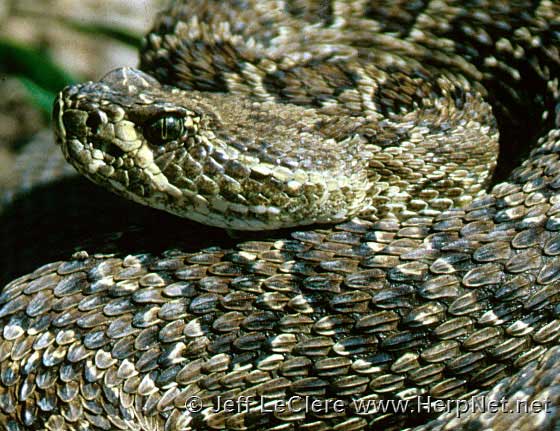
Status
ENDANGERED and Species of Greatest Conservation Need. It is illegal to kill or collect this species by law in Iowa. Known from only a few locations in northwestern Iowa. Please report this snake to us or the DNR, especially if found outside of Plymouth County.
Description
Dangerously venomous. This is a large Iowa species that is very heavy bodied and measures from 35 – 45 inches in length; the record is 57 inches (Conant and Collins, 1991). Prairie rattlesnakes have a diamond shaped head which is set off from the relatively thin neck. The pupils of the eyes are elliptical in bright light and there is a heat sensitive pit between the eye and nostril on both sides of the head. Ground color consists of varying shades of brown, from tan to greenish, to dark brown. There are darker blotches down the back, and smaller spots on the sides. The belly is usually light yellow or cream and unmarked except for darker stippling on some specimens. The tail is ringed with a tan rattle at the end. The rattle at the end of the tail will distinguish this snake from all others in its Iowa range. The scales are keeled and anal plate is single. The subcaudals are single (instead of divided as in all harmless Iowa snakes). Young are patterned the same as the adults and some specimens may have a lot of white outlining the blotches. They are 7 – 13 inches in length at birth.
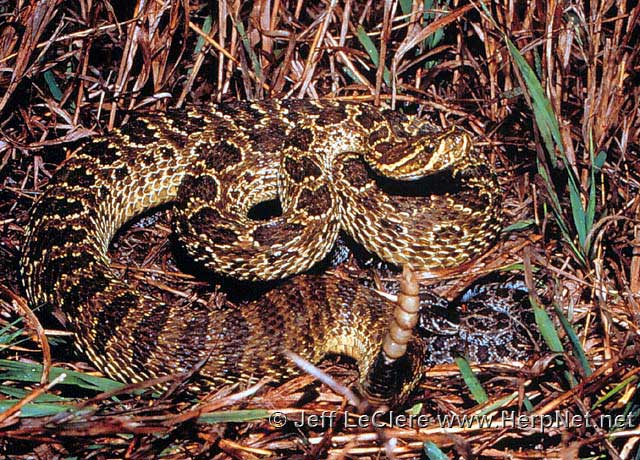
Subspecies
No subspecies are currently recognized.
Range
Although common in South Dakota and in other states to the west, this species barely enters Iowa. It is known from only one population in the Loess Hills in western Plymouth County. It may have had a slightly larger range in the past; recent reports suggest relic populations re-establishing or movement of the existing population.
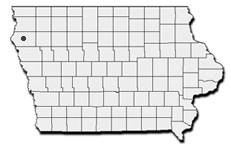
Habitat
Prairie rattlers are found in rolling prairies, grasslands, pastures, and other open prairie areas. Klauber (1997) states that the most common habitat utilized by prairie rattlesnakes are the grassy plains, the country of the prairie dog and the burrowing owl.
Habits
These snakes seem to emerge from winter dormancy in late April and early May. Many may be found overwintering together and groups may be seen basking outside the dens in spring and fall. Klauber (1997) gives a detailed summary of dens from South Dakota. They are located on south facing slopes in rocky crevices. In the absence of such structure, they use deep burrows dug by prairie dogs and badgers. These burrows are favored on slight south facing elevations for warmth. During the summer, they move into home ranges. As with many snakes, they are diurnal in the spring and fall, but shift to nocturnal activity during warmer summer months.
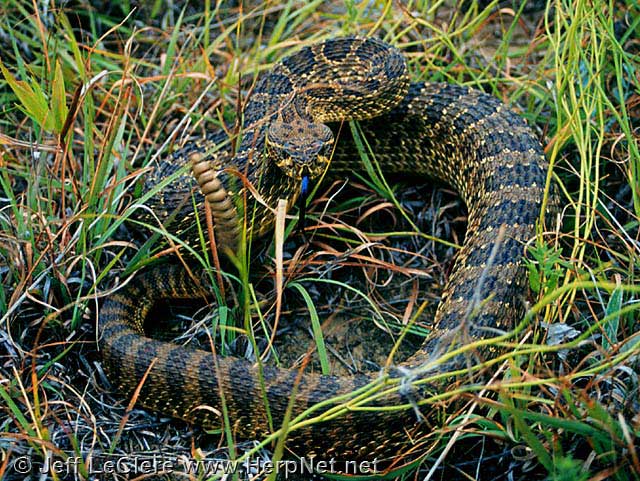
Prairie rattlesnakes may not mate immediately following emergence from winter torpor as males are reported to locate females away from dens (Rubio, 1998). Males search for females in the latter part of the active season; this species mates from mid-July to early September (Ernst, 1992). Gravid females do not eat during the gestation period and spend most of their time basking. Females give birth from August to early October (Diller and Wallace, 1984). Litter sizes ranges from 6 – 16 young. Unlike Iowa’s other venomous species, the prairie rattlesnake is pugnacious; coiling and striking with little provocation. This is how many have reacted when I have found them, including specimens from Plymouth County. They will flee if given the opportunity, and a bite will not occur if they are left alone when found. Sometimes they sit quietly blending in with the grass, but they are more apt to rattle.
A prairie rattlesnake is easy to identify from other harmless species, even though they are patterned the same. A prairie rattlesnake will hold its rattle high off the ground when it rattles making the rattle very obvious. A harmless snake will vibrate its tail to make a similar sound, but the tail must be held close to the ground to produce any noise; not high in the air like the rattlesnake. This snake is very rare in Iowa and I know of no deaths caused by this snake in the state. Agriculture and human interference have reduced the numbers or this already rare snake. Fortunately, the areas where this snake is now found is difficult to farm and some areas are protected. A prairie rattlesnake found outside of Plymouth County in Iowa should be reported!
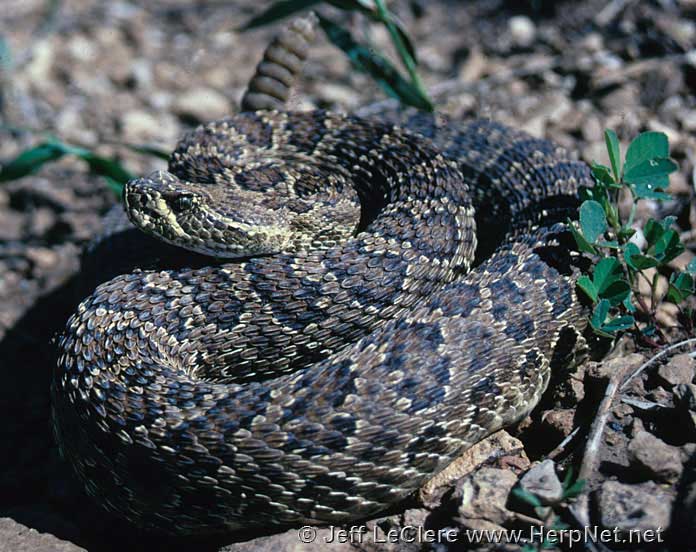
Food
Prairie rattlesnakes eat mammals, birds, and ground nesting birds’ eggs. Mice, young prairie dogs, and cottontail rabbits are common foods. Among the birds, the highest ranking found in Klauber (1997) were meadow larks. Small reptiles and frogs may be eaten as well. Prey is envenomed with a quick bite and released. The strike is aided by the heat sensitive pits present in all of Iowa’s venomous snakes. Prey is then tracked using scent (Ernst, 1992).